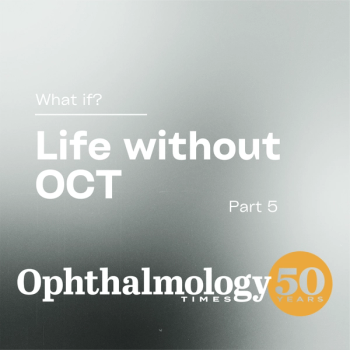
Prostaglanin analogue study: Benzalkonium chloride may not be the primary culprit in ocular adverse events
Safety data from a multicenter, double-masked, randomized clinical trial comparing the three commercially available prostaglandin analogue IOP-lowering medications containing benzalkonium chloride (BAK) were analyzed to investigate a possible relationship between BAK content and incidence of ocular adverse events. Latanoprost 0.005% (Xalatan, Pfizer), which exposes patients to the highest daily BAK dose, was associated with significantly lower rates of both ocular adverse events and study medication-related adverse events compared with bimatoprost 0.03% (Lumigan, Allergan) and travoprost 0.004% (Travatan, Alcon Laboratories).
Key Points
Atlanta-Analyses of safety data from the Xalatan/Lumigan/Travatan (XLT) study, a 12-week, multicenter, double-masked, randomized clinical trial, provide no evidence that a direct, dose-response relationship exists between the occurrence of ocular adverse events with those three medications and their concentrations of benzalkonium chloride (BAK), reported Paul F. Palmberg, MD, PhD, at the annual meeting of the American Academy of Ophthalmology.
The XLT study was conducted at 45 centers in the United States. Safety data were available for 411 patients who were approximately equally distributed between the latanoprost 0.005% (Xalatan, Pfizer), bimatoprost 0.03% (Lumigan, Allergan), and travoprost 0.004% (Travatan, Alcon Laboratories) groups.
Based on masked investigator assessments, latanoprost was associated with the best ocular adverse event profile, said Dr. Palmberg, professor of ophthalmology, Bascom Palmer Eye Institute, University of Miami Miller School of Medicine.
An inverse relationship
Evaluation of BAK content of the three formulations showed that when each is used with the recommended once-daily administration regimen, the daily exposure to BAK in patients using latanoprost is 7.1 µg compared with 4.3 µg with travoprost and 1.4 µg with bimatoprost.
"Although in vitro and preclinical studies provide evidence for dose-dependent BAK-induced epithelial cellular damage, toxicity associated with exposure to clinical concentrations has not been consistently demonstrated," he said. "The findings from this large, randomized clinical trial actually show an inverse relationship between ocular adverse event rates and concentration of BAK.
"Overall, they corroborate the favorable tolerability of latanoprost despite its relatively higher BAK content and suggest that factors other than exposure to BAK may underlie the differences in ocular adverse events among patients treated with the various prostaglandin analogues," Dr. Palmberg continued.
"As Johan Stjernschantz explained in his Proctor Lecture at [the Association for Research in Vision and Ophthalmology meeting]1 , the reduction of the 13-14 double bond in latanoprost markedly reduced hyperemia and ocular discomfort, and the other prostaglandin analogs do not have this beneficial modification," he said.
Eye redness reported
Patients were eligible for enrollment in the XLT study if they were aged 18 or more years; had unilateral or bilateral primary open-angle glaucoma, exfoliative or pigmentary glaucoma, or ocular hypertension for which they had been receiving topical monotherapy or dual therapy within the past 6 months; and met the IOP inclusion criteria. The three study medications all were used once daily in the evening.
Based on self-assessments, about 6% of patients in each group indicated having eye redness at baseline. The percentage of patients reporting redness at any post-baseline visit was significantly higher in the bimatoprost group compared with the latanoprost-treated patients, and at week 12, the percentage of patients reporting any redness in the eyes was significantly lower in the latanoprost group compared with both the travoprost and bimatoprost groups, 16% versus 27.3% and 34.8%, respectively.
"Among patients who experienced redness, few patients in the latanoprost and travoprost groups reported being bothered more than a small amount by the redness-only 2.3% and 3.0%, respectively," Dr. Palmberg said. "Among bimatoprost-treated patients, almost 7% of patients indicated they were bothered moderately or more."
Newsletter
Don’t miss out—get Ophthalmology Times updates on the latest clinical advancements and expert interviews, straight to your inbox.



















































.png)


